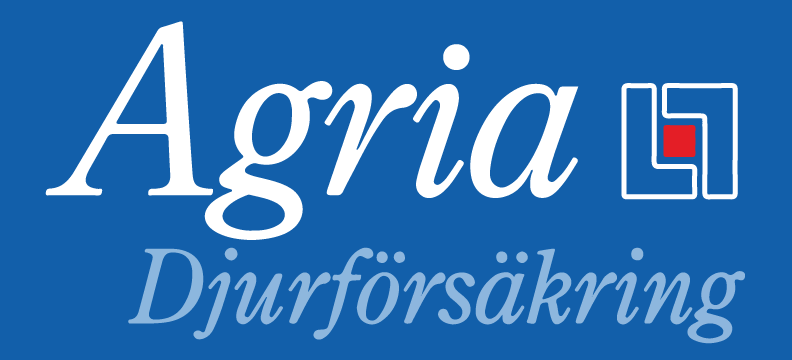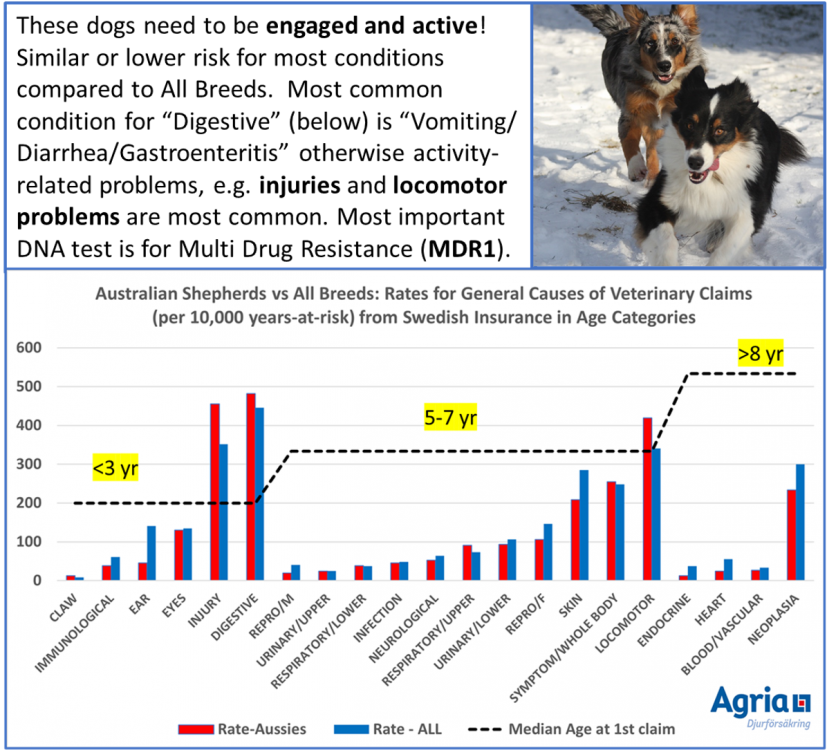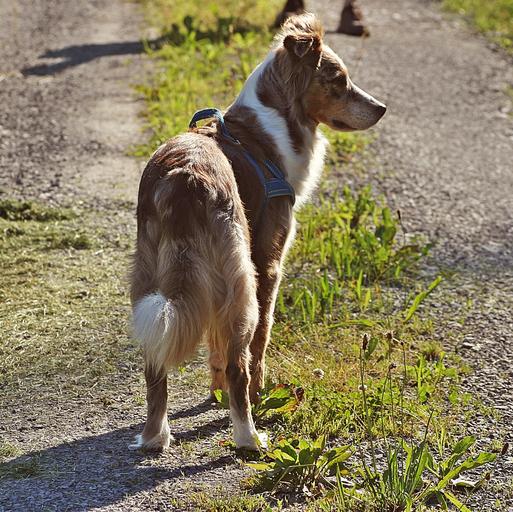Get a GRIHP! on Australian Shepherds
This article on Australian Shepherds is part of a series to highlight the Big Picture of health, welfare, and breeding and to help develop Globally Relevant Integrated Health Profiles (GRIHPs) for many breeds. See IPFD's Get a GRIHP! on Breed Health Initiative
Table of Contents
Breed Overview - In a Nutshell
Basically a healthy breed with a typical lifespan of > 10 years. The Australian Shepherd is a young breed – the first registration anywhere was in 1957. For the most part, the ancestral stock was made up of generic collie-type dogs used for livestock herding and guarding in the American West. Population characteristics: Brief history – As European settlers moved westward across North America, they brought their dogs along.. These included generic collie-type farm dogs. Those that came to live in the High Plains at the foot of the Rocky Mountains, the mountains and basins of the western states and on to the Pacific coast became the core source of what became the present day Aussie population. In general appearance these early dogs were similar to collie-type farm dogs found throughout Britain and in some other regions colonized by Great Britain, including Australia.
The breed name does not reflect nation of origin (the AKC club had to get permission of the ANKC to use the name), though there is documentation of some dogs of this general type coming to the Pacific coast with shipments of sheep from Australia. (Ref. the first ASCA Yearbook and an article by Jean Carrillo in the Aussie Times.) The association of the indigenous US dogs with these sheep is the origin of the name.
Today, most Aussies are companion dogs, but a significant minority are still used as work dogs on farms and ranches and/or as competitors in livestock herding events. There can be a marked difference in temperament and disposition between the bulk of the breed, which is largely derived from show lines, and the working lines. Working-line dogs tend to be more intense and may not be ideal for people who don’t have experience with dogs bred for real-life work. The shared focus among breed clubs is on maintaining sound structure and tractable, working dog temperament.*
Key Health Concerns of this Breed
-
Orthopedic concerns (Hip, Elbow and to a lessor extent Patella, Shoulder and Spine evaluations are required or recommended by clubs particularly for dogs used for breeding or where clinical signs exist.)
-
Eye evaluations (Eye exam - defects include ocular coloboma, iris coloboma, juvenile and senior cataracts, detached retina, persistent pupillary membrane, progressive retinal atrophy and distichiasis...) DNA tests - eyes (Canine Multifocal Retinopathy 1 (cmr1); Primary Hereditary Cataract (PHC); Collie Eye Anomaly (CEA/CH); Progressive Retinal Atrophy (PRA-prcd).
-
TEST: MDR1 [Multi-drug sensitivity] - critical to owner, breeder and veterinary management.
-
Cancers (hemangiosarcoma and lymphoma)
-
Epilepsy
-
Thyroid
What do caretakers of Australian Shepherds need to know?
-
Australian Shepherds are active, intelligent, and need outlets for their energy. Working stock dogs "possess the ability and versatility to control all types of livestock in an efficient and deliberate manner."1
-
Seriously... Australian Shepherds are beautiful, but owners need to recognize that these dogs REQUIRE physical and mental stimulation to thrive.
-
MDR1-related drug sensitivity information from ASCA...
Quote
Carrying even one copy of the mutation of the gene called Multi-Drug Resistance 1 (MDR1) can make a dog sensitive to certain medications, sometimes to the point of serious neurological illness or death. Fortunately, there is an extremely accurate DNA test that will let you know whether your dog has this mutation.
The mutation is so common in Australian Shepherds (roughly half have at least one copy) ... The test only needs to be done once.
If your dog’s test results show it has one or two copies of the mutation, keep a copy of the results and a copy of the drug list on file. Give copies of both these documents to any veterinarian that treats your dog and instruct him/her to place it in your dog’s file and not to administer any of the listed drugs without your express permission.
Ivermectin was the first drug recognized to cause a reaction, but it is not the only one. Ivermectin at low dosage, as in heartworm medications, will not cause a reaction. Other common drugs to avoid include acepromazine (a tranquilizer) and Imodium. Fortunately, there are alternative medications available if your dog requires them.
-
NOTE: For a list of problem drugs for dogs with MDR1 mutation(s) see: VCPL - WSU
1 ASCA Working Description
Population statistics for Australian Shepherds - the trends
Many thanks to C.A. Sharpe (ASHGI) for insights into the Australian Shepherd's breed history.
"Aussies have been subject to multiple registries for virtually all of their history, initially with two privately-owned registries. One of these, the International English Shepherd Registry, was asked in 1957 by the newly-formed Australian Shepherd Club of America (ASCA) to maintain a studbook for them. The club grew to the point it could manage its own studbook in the early 1970s but some breeders continued to registered with IESR as well as ASCA and the IESR Aussie studbook remains active today." ... "Many US breeders who are involved with various aspects of canine competitions, especially activity-based competitions, register their dogs with both ASCA and AKC."
In the USA the breed's registration with AKC is reflected by a numerical "ranking" compared to all breeds. The Australian Shepherd breed has steadily climbed to the #13 (2019) rank among all registered AKC breeds. As a gross estimate, it may be that approximately 35000 Aussies were registered by AKC in 2019. (Current US/AKC registration statistics are not published or readily available for the Australian Shepherd - contact the AKC parent club, USASA - - United States Australian Shepherd Association.
Please note: multiple registries exist; the figures represented in the charts below do not necessarily represent full country-specific populations of Australian Shepherds. Stock and Working Dog registries exist: dual registrations in registries is not uncommon. Show dogs as well as stock dogs may be registered in one or more registries.


Health Statistics
Agria - Swedish Breed Profiles
For many years, Agria Animal Insurance, Sweden (Agria Djurförsäkring, Stockholm, Sweden) has supported veterinary research and provided statistics on diagnoses for health and life claims to Swedish breed clubs. Since 1995, Agria has collaborated with and funded researchers, from universities in Sweden and other countries, to produce over 35 scientific publications on descriptive and analytical research from their database. Read more and see Breeds with Swedish Insurance Data.
It is not surprising that locomotor concerns are evidenced in Agria Insurance claims... the Australian Shepherds are very active and athletic dogs. Rather than inherent structural issues/defects, injuries may in fact be a primary management concern for members of this breed.


Comparing similar breeds


**NOTE : Although relative mortality is interesting to look at, caution should be applied in extrapolating from these insurance data on deaths, as the number of dogs insured tends to decrease at advanced ages.
Australian Shepherds - Breed-Specific Health Strategies
Health Screening Tests for Australian Shepherds
|
Hips
|
Hip screening is recommended or required by most Kennel and Breed Clubs - available data indicates the incidence of issues related to HD is low.
|
|
Elbows
|
Elbow screening is recommended or required by most Kennel and Breed Clubs - available data indicates the incidence of issues related to ED is low.
|
|
Eye Exam
|
Eye Exams are universally recommended or required - available data on testing indicates various eye diseases / conditions are present in the breed. Examination of young dogs with follow-up exams is typical.
|
|
Patellas / Shoulders
|
Patella and Shoulder screening are acknowledged by Kennel and Breed Clubs / a few dogs are tested / evaluation recommended if clinical symptoms exist
|
|
Spine
|
Some spinal evaluations are done / evaluation recommended if clinical symptoms exist
|
|
Thyroid
|
Thyroid testing is on Kennel and Breed Club's radar - thyroid issues are present in the breed
|
HGTD - DNA Tests for Australian Shepherds
Genetic Test Ratings for Specific Breeds
 Some, moderate or strong evidence
Some, moderate or strong evidence from available research. The test may be meaningful or recommended for this breed.
 Unknown
Unknown, not evaluated, or no evidence for the use of this test in this breed.

All current available evidence has been reviewed, but relevance is
inconclusive, and/or the clinical form of the disease
has never been seen in this breed.

All current evidence indicates that the test is
not meaningful or recommended in this breed.
Ratings for the tests available for ALL DOGS are similar to those for individual breeds, but reflect the general level of relevance across all dogs.
Breed Relevance Rating : The HGTD database includes a simplified rating, indicating the level of available evidence supporting the use of a specific genetic test for each breed/type. The relevance rating is determined based on various evidence sources, including peer-reviewed research papers, recommendations from the original researchers/test developers, and input from additional experts including veterinary specialists and breed experts.
It is important when considering the ratings to understand that this indicates how much we currently know or do not know about a specific test for a specific breed. This does not necessarily indicate how “good”, or “bad” a test is. It also does not indicate the wider clinical importance of the disease or condition. Genetic tests should be used as tools within the Big Picture of health for any breed.
References and Resources
*Many thanks to C.A. Sharpe (ASHGI) for insights into the Australian Shepherd's breed history.
Acronyms KEY: Organizations
-
ANKC: Australian National Kennel Council
-
ASCA: Australian Shepherd Club of America
-
ASGHI: Australian Shepherd Health and Genetics Institute (International Database & health articles in multiple languages)
-
IESR: International English Shepherd Registry
-
NSDR: National Stock Dog Registry (Division of International English Shepherd Registry, Inc.)
DogWellNet Resources
Databases
IPFD and The World Small Animal Veterinary Association
See our series of Meet the Breed articles in the WSAVA Bulletin and associated Get a GRIHP! Articles on DogWellNet.com:
-
Welsh Corgi


-
Dachshund
-
French Bulldog
-
Australian Shepherd
-
Saluki
-
Golden Retriever
-
Bernese Mountain Dog
-
Black Russian Terrier
-
Pug
-
Finnish Spitz
-
Rhodesian Ridgeback
-
Rottweiler
-
Whippet
-
Belgian Shepherd
-
English Bulldog
-
Irish Soft Coated Wheaten Terrier
-
Dalmatian
-
Border Terrier
-
Staffordshire Bull Terrier
-
Siberian Husky
-
Dobermann
-
Shih Tzu
-
English Setter
-
Beagle
-
Chihuahua





 Donate
Donate









Recommended Comments
There are no comments to display.
Join the conversation
You can post now and register later. If you have an account, sign in now to post with your account.
Note: Your post will require moderator approval before it will be visible.